How America has changed after four years of Donald Trump
Many weeks have run into each other for News Corp US correspondent Sarah Blake, but there are still some events that stand out especially clearly.
World
Don't miss out on the headlines from World. Followed categories will be added to My News.
New York City loomed bright and distant for as long as I could remember.
Growing up in Australia in a family of journalists, a stint in the world’s media heartland was almost a rite of passage.
One of my last conversations with my father was about how I would need a “real winter coat” for our planned extended visit after I finished high school.
He hoped to join my uncle Peter and their great mate Steve Dunleavy, an almost legendary Aussie transplant at the New York Post with a direct line to the city’s most colourful characters, to carve out a later in life career transition and maybe even finish another novel.
Dad’s terrible death soon afterwards was followed by me living a whole lot of life in my 20s, and my first trip to the US wasn’t for another decade when my husband and I eloped to Central Park.
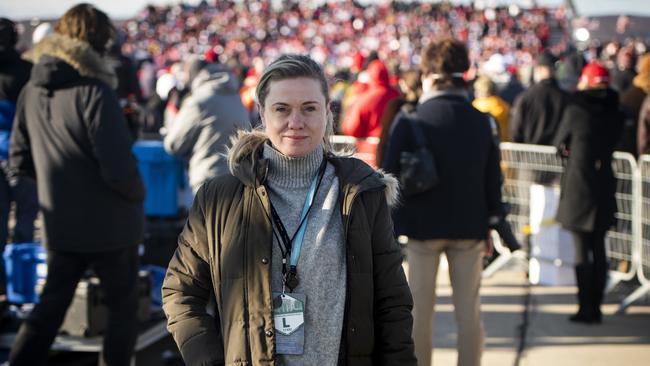
On that unseasonably warm September afternoon when we laughed over champagne about how one day we wanted to live here, it seemed nothing more than a tipsy, twilight dream to match the Manhattan views that spread beneath our rooftop bar.
And then, just as Donald Trump’s reality-TV pitch to run the most powerful country in the world was looking more and more certain, my editors tapped me on the shoulder to cover the most fascinating story of modern American life.
I felt as though everything I had done until that early morning phone call from my boss while I was covering the 2016 Olympics in Rio had been leading to this moment.
Even though we knew it was going to be a wild ride, we couldn’t have guessed at what the next four years would actually bring.
Here’s the story of the Don and me.
STRANGE DAYS
Life in America has been exhilarating, challenging and often baffling.
There has been a lot of laughter and many awkward expat encounters as well as a few edgy, frightening days and some heartbreak.
It has been the adventure of our lives and all through it I have felt a great responsibility to be trusted to tell the stories of this incredible country to our Australian readers.
Many weeks have run into each other because of the demands of a foreign correspondent in a 24-hour news cycle, but there are still some events that stand out especially clearly.
The strangest two days started on January 5, as I joined tens of thousands of Trump supporters making their way to Washington DC for what should have been a ceremonial box-ticking that would certify Joe Biden’s November 2020 election win.
The relaxed commuter quiet on car three of the Acela express train from Boston to Washington DC was shattered by a heavy New York accent yelling at someone to pull their mask up shortly after we pulled into Penn Station just before midday.
Moments of mask ago aren’t unusual on public transport these days.

Depending on which part of the country you’re in you can be yelled at for not having your nose properly covered or openly mocked for being such a sucker that you wear anything over your face.
But this encounter shot to eleven in a matter of seconds, as a shortish, angry sixty-something redhead pulled out her phone to start filming the three “MAGA f — ckers” she said were in her seat and who weren’t wearing their masks as they sipped from takeaway coffee cups.
These clips tend to quickly go viral on social media and this woman would indeed soon be the trending hashtag #crazymasklady.
She started yelling something to the three or four heavy-set, middle aged men about how she was going to show her video to her 70,000 Twitter followers.
A slim twenty-something brunette from seat 8A in front of me stood up, saying “leave that man alone” as she strode down the aisle.
Soon about half a dozen people were yelling at each and didn’t stop until the conductor turned up and threatened to call the cops.
“Did you see that?,” the brunette asked me as she came back to her seat.
“She says she’s got 70,000 Twitter followers. So what? I've got 650k.”

The skinny young man across the aisle, who explained he was on his way to DC for a filmmaking “collaboration” leaned over to chat with us.
“How do you have so many followers?” he asked her, adding he only had 100k of his own.
I learned that 7D’s stage name was Blake Romano, who showed me on his phone how he was making himself a handy $8000 a month selling pornographic pictures on his Only Fans account.
In front of me, the brunette who turned out to be prominent conservative blogger Ashley StClair was scrolling her iPhone as it blew up with retweets of the video she had taken of her encounter with #crazymasklady. It has had almost 800,000 views.
She and the older lady – soon identified as a Huffington Post contributor – had a couple more clashes on the three-hour train ride, both of them videoing each other and sharing the clips on social media.
Later that night at The Darcy DC Hotel where I was staying, dozens of unmasked Trump supporters gathered in the lobby for the first party I had seen in close to a year.
They shared pizza, food from takeout Asian boxes and spoke closely together over small plastic glasses of cocktails about how something big was going to happen in the city the next morning.
Nobody I spoke to in those two days was sure what this “something” was, but many of them were determined that Trump was going to retain power, possibly through the intervention of then Vice President Mike Pence.
ROCK BOTTOM
They say that for recovering addicts there is a point where you reach rock bottom, because things simply can’t get anything worse.
American politics had felt like it was careening towards a rock bottom, measured by its absurdity, for some months.
For a little while there, that milestone seemed to be the press conference the Trump campaign held at Philadelphia’s Four Seasons Total Landscaping business at the same moment that cable TV networks and the Associated Press officially declared that Joe Biden was going to be the 46th president of the United States.
While it is still not clear if a campaign aide thought they were booking the luxury hotel of the same name or if something else lured Trump’s misfit brigade of election-challenging lawyers to a suburban, semi industrial site near an adult store and across from a crematorium, the then-president certainly thought the press pack was headed to the more stately Four Seasons in downtown Philadelphia.

It was four days after Trump lost the election but insisted he had won it, and as the former New York mayor turned Trump-sidekick Rudy Giuliani alleged widespread voter fraud, social media and TV reporters melted down with laughter at the ineptitude that sent him and his colleagues to a landscaping business carpark to make their case.
Trump, who was golfing that morning, had previewed the event by tweet, back when he could still use the platform that has now banned him for life, saying: “Lawyers Press Conference at Four Seasons, Philadelphia”.
This was shortly followed by: “Four Season’s Landscaping!” And another urging those watching to “enjoy”.
Weeks later sightseers were still turning up outside the nondescript business for selfies and the Four Seasons Landscaping owners quickly capitalised on the attention, selling more than $1 million worth of merchandise including T-shirts saying “Lawn and Order” and “Make America Rake Again”.
It wasn’t long afterwards that Giuliani set a new, somehow lower bar, sweating through another press conference full of lies about election fraud in front of American flag with dark grey hair dye running down his face.
Surely, after four years of distinctly unpresidential tweets, revelations of hush money payments to porn stars and impossible-to-script, comedic episodes such as Trump turning to stare fully at the sun during an eclipse, these crazy lawyers were rock bottom.
But it turned out that in November we weren’t quite there yet.

The worst was to come in the form of some of those tens of thousands of “Stop the Steal” rally attendees, drawn to the capital for what history will record as Trump’s darkest hour.
Giuliani revved up the red, white and blue-draped crowd near the White House to fight the election results demanding: “Let’s have trial by combat”.
The main act was the president, bitter and still railing at his loss, who told his followers even as Pence and his family were forced to run for their lives from rioters who had overrun the nearby US Capitol that his VP was a traitor.
Footage and photographs of the horrifying incursion spread quickly around the world.
Trump’s peers wondered aloud at the “banana Republic” event in Washington DC.
What started as a party ended with America shamed.
A NEW APPROACH
There are several episodes where it has been almost impossible for anyone here who had managed to stay on the fence and push aside their distaste for Trump’s language, pettiness and crude approach to policy to remain objective.
As a journalist it has been my role to hold a straight line in my reporting (and a straight face at the farce).
Another challenge has been staring down nothing less than a tidal wave of revulsion about the man from many left-leaning relatives and friends back home.
It is incredibly easy for those in Australia, whose main Trump exposure is through his most shocking sound bites on TV news, to attack the man and his supporters.
Trump’s critics here are also so quick to step forward that we learned early on to only mention the T-word in measured company and circumstances.
But to dismiss his backers as crazy, stupid or lazy thinkers is to miss the point.
Yes, a lot of it is ridiculous, but many of the Trump supporters I have met are far more considered than their MAGA hats and paraphernalia makes them seem.
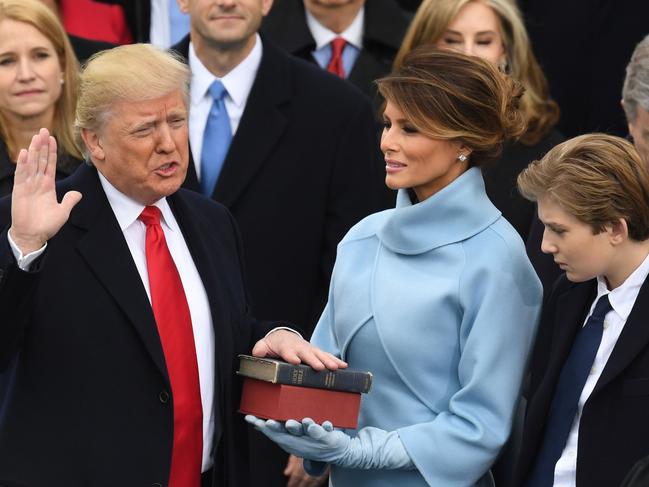
My editors had tasked me with playing it down the centre in a country where both sides of the media are shockingly partisan.
With loose defamation laws that make Australia look like a police state, people can say almost whatever they want about anyone. And they do.
But among the insults and the melodrama, a lot of it coming from Trump himself, the undeniable reality is that if you looked beyond the man himself, until January last year his legacy was safe.
Unemployment was low, domestic wealth was up, the stock market was running hot and Trump was even cutting peace deals in the Middle East.
The “Russian hoax” impeachment was done and dusted and while Trump was historically unpopular among many Americans, he had numbers well above his rusted on base.
Trump was bringing US troops home. He turned out to be a dove who didn’t want to start wars and he stunned the world by finally calling out China and its ever-growing malignant international influence.
Trump didn’t get everything right, but he did follow up on his promise to do things a new way and to question the old norms.
Instead of isolating North Korea, he reached out to Kim Jong-un and tried “friendship”. It didn’t work, but no nukes came across the bow as a result.
He told Iran to stuff their nuclear ambitions where the sun didn’t shine.

Similarly, during the pandemic he withdrew US support for the World Health Organisation – again, refusing to go with groupthink and calling an old and questionable global body to account.
The Trump approach was to insist that just because something exists doesn’t mean it should, and it was refreshing to many Americans.
Trump even took on Malcolm Turnbull over a refugee deal from the Obama era.
It wrankled Aussies that he took us on, but again, that was his way – he had no respect for protocol, past agreements and tradition. He was the bull in the China shop.
But it was working.
I believe he would have won quite convincingly last November if he had been able to come across as a little bit human during the COVID crisis.
That’s all he had to do. Pretend to care, even if he didn’t.
A lot of Americans wanted to stay behind him, but he made it too hard with his loose words and big mouth.
Americans wanted to believe in Trump and they were prepared to give him plenty of rope. In the end, he hung himself with it.
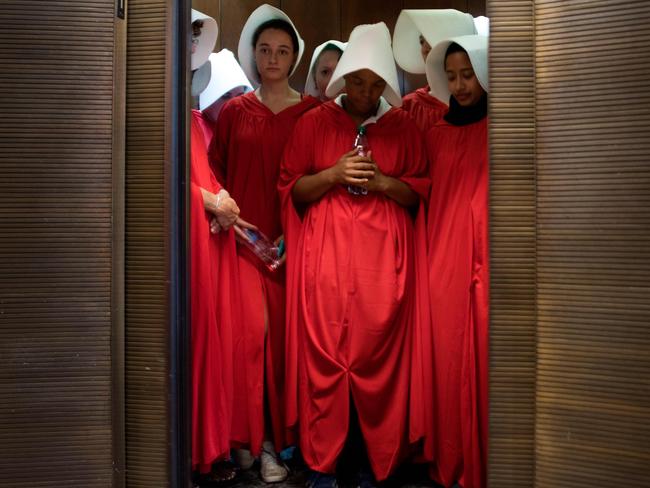
Here was a man who finally gave voice to tens of millions who felt they’d been put out of jobs, told how to speak, what to think, how to walk and how to talk.
But he infuriated his own base, the more moderate elements of it at least, by being himself.
He had the power, but he disappointingly ruined it for himself and his followers.
Many here believe that after the election, Trump was very close to declaring martial law and giving himself power for years to come.
A friend said recently: “He was gonna win if he hadn’t made such a mess of the coronavirus. And the scary thing is, he’s shown America now that if you wanna come in and just smash everything up, all you have to do is be a bit smarter and pretend you give a damn about people, and you’ll have a job for life.”
Maybe it was more than an experiment. Maybe Trump was a taste of things to come.
The man himself was unrefined, a buffoon with no filter.
But what if the next Trump is craftier, more charming and less inclined to be the loudest and most tone-deaf in the room?
Then things could get really interesting again.
FAKE NEWS
As a correspondent covering the Americas, I have come through US customs 26 times in the past four years and the always nerve-racking interactions with border control tell a larger story about Trump’s America.
Back in 2016, when I was first interviewed at the US Consulate in Sydney for a media visa to report on a story about firefighters from 9/11, the young man behind the counter solemnly thanked me for my important work.
For my first year or so, as I travelled several times to Colombia to report on the arrest and later trial of Adelaide woman ‘Cocaine’ Cassie Sainsbury, I had no trouble with border control and they would often ask interested questions about my job and travel.
Ready to offer a sound bite with no notice, Americans’ openness to the press was very refreshing after two decades reporting in Australia, where people are nowhere near as forthcoming to strangers, with this warmth extended to those in authority.
I was surprised during one of these Central America trips when I took a quick weekend break to meet my husband in Mexico after he flew down from New York for our wedding anniversary.
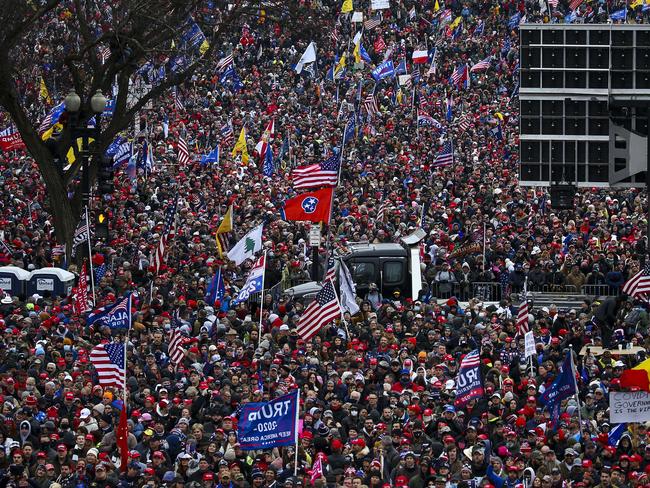
I had been sure that my return flights from the cocaine capital of Bogota to the party city of Cancun would trigger some kind of alert, but nobody raised an eyebrow.
This relatively easy reception at border control changed over the years as Trump’s war on the media became one of his main fixations.
On one of my last entries before COVID shut down international travel I was asked, with a snarl: “You’re not here to write bad things about my president are you?”
On another a scowling middle age man spent half an hour going through my passports and visa, asking where some immigration paperwork I had never known about was.
“It’s a requirement. You can’t come in on your visa without it,” he insisted.
After a while I was referred to a supervisor who waved me through.
This change in attitude was most apparent at the Trump rallies I covered.
It became standard early on for Trump to rile his crowds with anti-press slogans.
The first time I stood in a media pen as dozens of men, women and children stood nearby, shaking their fists and screaming “CNN sucks!” and “Fake news!” in 2017 was confronting, but until the end of Trump’s presidency I didn’t actually feel in danger.
Those last few rallies in October and early November were more edgy, the tension more palpable.
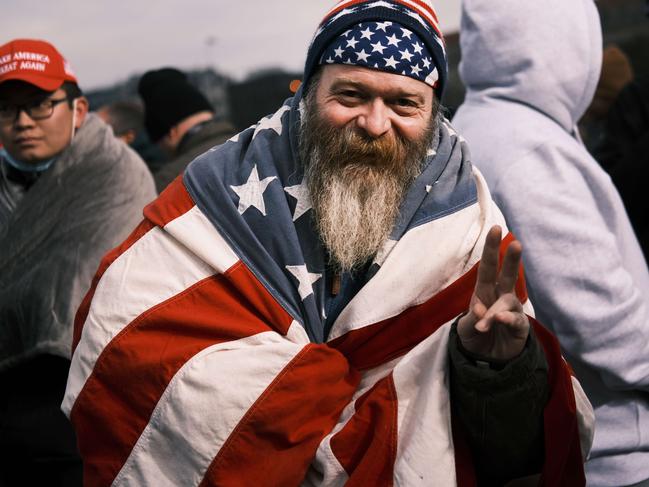
And on January 6, when I walked with the crowd on their march towards Congress, there were moments where I was physically scared.
I learned early on not to openly wear my media credentials during demonstrations and instead tuck them into my shirt.
In DC in January the fact I was wearing a mask was enough to rile up some of the people I spoke to, let alone to introduce myself as a reporter.
I didn’t join my more courageous colleagues who reported from inside the chaos as Trump’s supporters broke through the meagre defences and overran the Capitol.
Some of these photographers, camera operators and journalists were assaulted and their gear trashed.
As a mother of three, working alone in that increasingly angry crowd without bulletproof armour, a gas mask or a helmet, I couldn’t justify the personal risk.
But a small part of me regrets standing back from crowd’s thrumming energy.
A CHILLING MISTAKE
There were only a few other moments of genuine fear for my safety in the past four years.
One was in Rio, where I was trying to find Marcelo Santoro, who had fled there in April 2018, after allegedly stalking and killing his former lover, businesswoman Cecilia Haddad in Sydney.
After a few days staying at a hotel in Copacabana, I felt relatively comfortable wandering the area alone.
But as dusk fell when I was walking a few streets back from the beachfront I felt an adrenalised spike of fear as I realised I was the focus of a lot of attention.
I made the first mistake any security training warns you against, losing my focus and situational awareness as my thoughts drifted from what I was doing.
Most crime in a desperately poor city such as Rio is opportunistic and I knew I was in trouble after I smiled back at two boys, aged around 10, who quickly grabbed my hands and tried to pull me into an alley as an older man walked straight at us.
I pulled away and ran, quickly feeling foolish, but it was enough of a jolt to stop me making the same mistake again.
Until a few weeks later when we found Santoro hiding at a relative’s apartment, I avoided travelling alone through the city.
A year later, I travelled to Culiacan in Mexico for an embed with the Sinaloa State Police to report on their efforts fighting drug cartels who are increasingly targeting the Australian market.
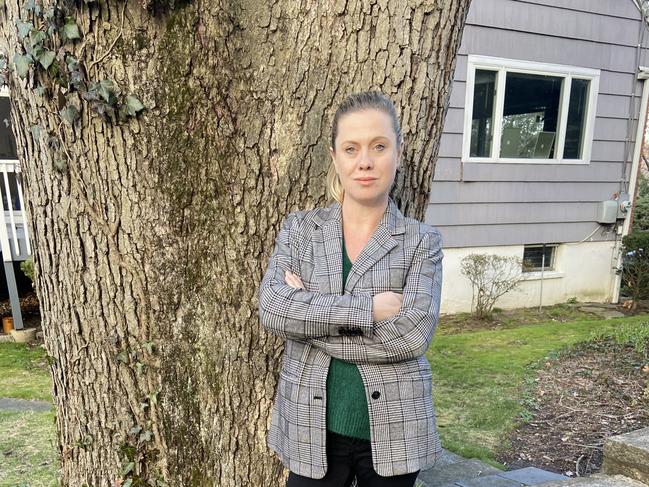
I wasn’t alone on this trip, with our fixer translating for us and a trusted photographer colleague having travelled from Australia for the job.
We listened to police-intercepted radio inside an armoured vehicle as cartel members spoke about us as the “gringos” who were with police at a raid on one of the jungle labs where they made millions of dollars of ice each month.
The risk didn’t feel intense because more than a dozen heavily armed police were with us most of our time in Sinaloa.
But about a week later, after the same police arrested the son of drug lord El Chapo, cartel members took over the city, ambushing and killing one of the brave men we had travelled along with.
Ovidio Guzmán López, who had partly taken over the cartel his father founded while he rots in a New York jail, was released after hours of running gunbattles through the city, when the cartel laid siege to the same police barracks where we had stayed during our time in the city.
At times this job has felt like I was a contestant in The Amazing Race, dropped into an unfamiliar location and racing the clock – in the form of deadlines and my rival Australian press pack – for answers.
One of the most unexpected was in far northern central Canada, in a town where its illegal to lock your car doors in case someone needs to hide inside from a hungry polar bear.
Young Australian man Lucas Fowler and his American girlfriend were among five people who were murdered by two teen thrill killers who led Canadian authorities on the biggest manhunt in Royal Canadian Mounted Police history in August, 2019.
Mr Fowler’s father was NSW police Chief Inspector Stephen Fowler, who had the heartbreaking task of heading to Canada to bring his son’s body home.
The bodies of the killers were later found near a river in remote Manitoba not far from the tiny town of Gillam, where Australian and Canadian press spent more than a week camped out to report on the search.
But while the killers were at large, wandering in the wilderness near police searchers brought back memories of a similar moment in an isolated, lonely patch of Central Australia back in 2001, when I had reported on the murder of British backpacker Peter Falconio and the attempted abduction of his girlfriend, Joanne Lees.

America’s gun obsession has been central to many of the biggest and most difficult stories of the past four years, including the tragic killing of Sydney woman Justine Damond Ruszczyk in Minneapolis in July, 2017.
Sitting through the trial of her killer, rookie cop Mohamed Noor, was among my most emotionally challenging tasks.
Ms Ruszczyk’s Australian family and American fiancee sat crammed in a tiny courtroom next to Noor’s supporters, listening to graphic, terrible evidence to bear witness to her death over almost 30 days of the trial.
And even after Noor was found guilty and Ms Ruszczyk’s family received a record payout that they partially donated to gun control groups in the city, there was little solace.
Like almost every murder I have reported on, the overwhelming sense I took out of it was that this loss was just such a tragic waste.
AN ELECTION LIKE NO OTHER
It’s tragically comic that one of the only good things about the upheaval of coronavirus has been that so much remote education has put a stop to what had seemed like an endless stream of school shootings.
Over the past year in the US it’s been hard to find the positives.
Trump’s COVID failures were by no means wholly to blame for the outsize toll the pandemic has taken on America.
Many senior Democrats were so focused on his first impeachment that they scored political points over his quick closing of US borders to China and Europe, describing them as xenophobic and the coronavirus as no real threat.
Democrat states that enforced harsh, business destroying lockdowns have also fared among the worst.
Our family fled New York’s winter for a Florida road trip over Christmas, where we found a state that seemed a world away.
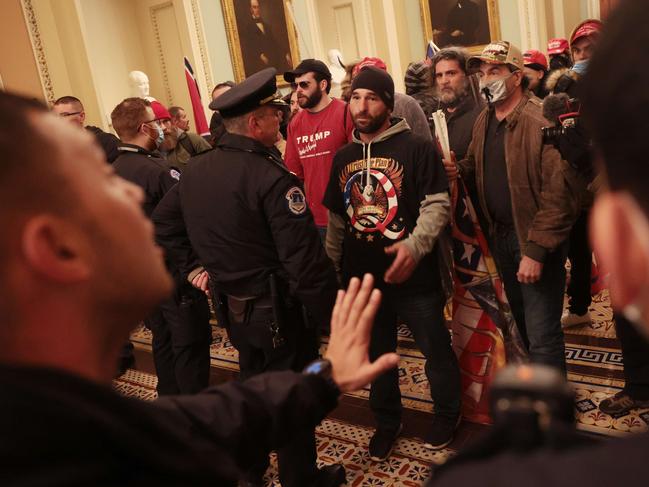
Businesses and restaurants were open and there was easy access to well-run, free testing even on Christmas Eve, something that New Yorkers could only dream about.
Testing isn’t the only failure in New York, with Governor Andrew Cuomo’s deadly directive to send COVID positive patients out of hospitals and back into nursing homes now under FBI investigation.
Since the US often feels more like a series of distinct countries run by highly partisan governors, rather than states, a federal response to COVID was always going to be extremely challenging.
Trump’s bomb throwing and denials certainly didn’t help the situation, which had its low point when he suggested ingesting bleach should be investigated as a treatment option.
Had 2020 not been an election year, there is little doubt that the pandemic would not have been the multilayered calamity that it still is here.
FAREWELL TO NEW YORK
Our time here was bookended by that first breathtaking election result and a global pandemic that sucked the life out of a lot of America’s cities, with Los Angeles, San Francisco and New York flailing to address unemployment, widespread poverty, overwhelmed food banks and burgeoning homelessness.
Many of America’s cities also spent last year rocked by growing civil unrest amid the national and ongoing racial reckoning after George Floyd’s death beneath the knee of a white police officer.
The New York we will be leaving in a few months is torn and frayed but I don’t doubt it will be back to its fabled best.
One of the loveliest afternoons I remember was early in my time here, spent like an old school newspaper reporter propping up the mid-town bar Langan’s, across the road from the New York Post.
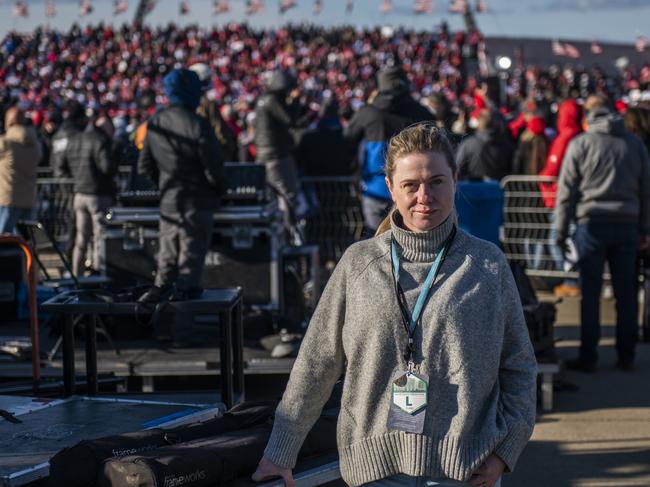
It was one of the last times I saw Steve Dunleavy, my dad’s oldest mate, who passed away in 2019.
Over wincingly strong gin and tonics, he shared some tales about my larrikin father that I hadn’t heard.
When you lose your parents as a child as I did, new stories like the ones Steve shared are rare and precious.
He told me about the last time he spent with Terry Blake, who had visited the year before he died, and stayed at Steve’s Long Island home for a couple of weeks.
“He loved everything about this city,” Steve said, from easy access to the New York Philharmonic at the Lincoln Centre, to talking to the characters who make the neighbourhoods hum and losing time in dive bars. He just couldn’t wait to get back here.”
Me too.
Originally published as How America has changed after four years of Donald Trump




